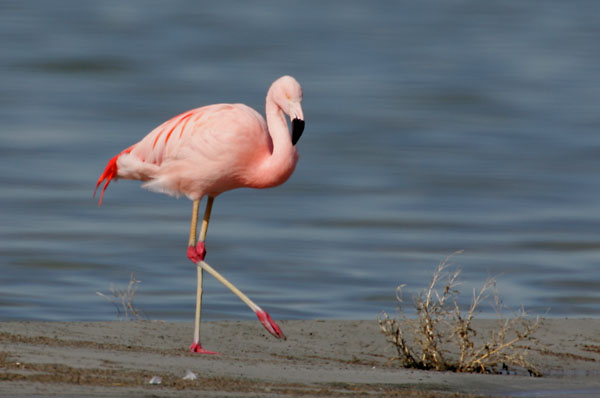|
|
|
Introduction |
Secluded Place |
Scrape | Mound | Burrow | Cavity | Plate |
Platform |
Pendant | Sphere |
Cup | Host | |
Mound Nests
Our
locally famous Chilean Flamingo "Pink
Floyd" is, perhaps our only link to a mound-nesting bird in
Utah. Since the probability of Pink Floyd finding a mate,
was pretty much zero (unless another Chilean Flamingo should
escape from the Tracy Aviary), there wasn't much chance for a
flamingo mound nest in the state.
|
|
 Chilean
Flamingos build a 6 to 18 inch tall nest with a depression on
top from mud they pull towards them with their bill. This
protects the single egg from a rise in water level while it is
being incubated. Chilean
Flamingos build a 6 to 18 inch tall nest with a depression on
top from mud they pull towards them with their bill. This
protects the single egg from a rise in water level while it is
being incubated. |
"Pink Floyd" our Utah Flamingo,
by Jack Binch
ŠJack Binch
|
In Australia and Asia megapodes build
huge mound nests made of soil, sticks of all sizes and leaves
which generate heat because of rotting of organic material in the
soil. The male usually does the building and Maintenance work
on these mounds and the female will lay the eggs when the mound
temperature is at the right level. The temperature and
moisture content is regulated through the entire breeding season
which could be as long at eight months. The Male will stir
in more moist material to increase the temperature or open the top
of the mound to decrease the temperature to make sure the
conditions are just right for the eggs.
The Malleefowl, nesting in more open forest than other megapodes, use the sun as another element for heat regulation in a
similar mound-nesting strategy.
|